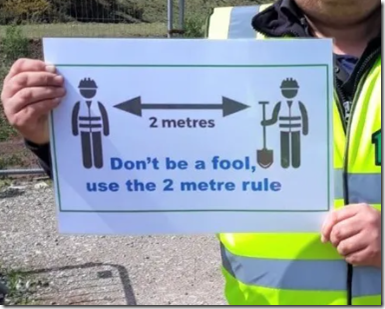Are You a Safety Fool?
 The fool in Shakespeare is the Archetype of wisdom. The fool in Shakespeare, is a technical term not a descriptor, all language is subjective. The fool both entertains but hidden in their discourse is the voice of ‘truth to power’.
The fool in Shakespeare is the Archetype of wisdom. The fool in Shakespeare, is a technical term not a descriptor, all language is subjective. The fool both entertains but hidden in their discourse is the voice of ‘truth to power’.
In Elizabethan England a clown was just a ‘yokel’, someone who was simple, black and white and uneducated. A fool is not a clown.
The good thing about the fool in Shakespeare is he is given licence to speak truth to power. So when the fool speaks he envisions the trajectory of discourse (language in use) and what Discourse (ideology) is hidden in what others say, particularly, the powerful and corrupt in the club. The fool acts in a similar way to the chorus in Greek drama.
The fool is not interested in orthodoxy as the archetype Power is. The fool can see the trajectories of orthodoxy and so ‘envisions’ a different way of doing things. The fool ‘sees’ how Power demonises persons and calls it out.
Some of my favourite fools are King Lear’s fool, who is simply called ‘fool’ and Feste, in Twelfth Night. There is a neat infographic on the nature of the fool here: https://blog.oup.com/2016/09/shakespeare-clowns-fools-infographic/
The fool is Lear’s constant companion and serves as the audible conscience for a foolish king, he constantly comments on the King’s folly and often wonders why few others can ‘see’ it. Unfortunately, Lear’s fool is hanged in the end, not for contentious speech but for being associated with Lear. Association with orthodoxy always falls when the revolution comes.
Feste is the most famous of Shakespeare’s fools. He entertains and tells jokes but is respected because he is visionary. Feste is highly intelligent and speaks the truth to Power as he sings and dances. He is the one who can best articulate what is really going on. In this way he serves as both fool and prophet. Prophets don’t need to tell the future but forth-tell about trajectories not perceived in the present. Feste tells about the ‘bloody obvious’ and wonders why others cannot see such trajectories.
It’s pretty challenging to be a fool in safety if your job and mortgage are on the line. Most people I know who work in zero organisations can’t speak against it or they know they will lose their jobs. Zero takes no prisoners, Zero cannot tolerate being exposed for what it is and seeks to hide its brutalism in fake language of care for injuries. Only a fool speaks against Zero (https://safetyrisk.net/take-the-zero-survey/ ).
One of the things we like to do in the Social Psychology of Risk (SPoR) is explore things to learn in Poetics, all those things that are not measurable or quantifiable. So, in SPoR (https://cllr.com.au/product/an-introduction-to-the-social-psychology-of-risk-unit-1-free-online-module/) we seek wisdom as much as in Poetics as we do in science, we think Shakespeare has just as much to say as Einstein. We don’t throw one out for the other but rather seek wisdom in the dialectic between Shakespeare and Einstein. It is in the STEM-only paradigm that we see the most folly and speak as a fool about it.



Rob Long says
Ha Jason, I’m sure no-one in safety thinks Shakespeare has anything of value to say to Risk. There is no Poetics in the BoK.
Jason says
Careful Dr Long you might just make their little STEM heads explode. LOL
bernardcorden says
The Fool on the Hill (Lennon & McCartney)
Day after day
Alone on a hill
The man with the foolish grin is keeping perfectly still
But nobody wants to know him
They can see that he’s just a fool
And he never gives an answer
But the fool on the hill
Sees the sun going down
And the eyes in his head
See the world spinning ’round
Well on the way
Head in a cloud
The man of a thousand voices
Talking perfectly loud
But nobody ever hears him
Or the sound he appears to make
And he never seems to notice
But the fool on the hill
Sees the sun going down
And the eyes in his head
See the world spinning ’round
And nobody seems to like him
They can tell what he wants to do
And he never shows his feelings
But the fool on the hill
Sees the sun going down
And the eyes in his head
See the world spinning ’round
Oh, oh, oh, oh, oh, oh
‘Round and ’round and ’round and ’round and round
And he never listens to them
He knows that they’re the fools
They don’t like him
The fool on the hill
Sees the sun going down
And the eyes in his head
See the world spinning ’round
Oh
Oh